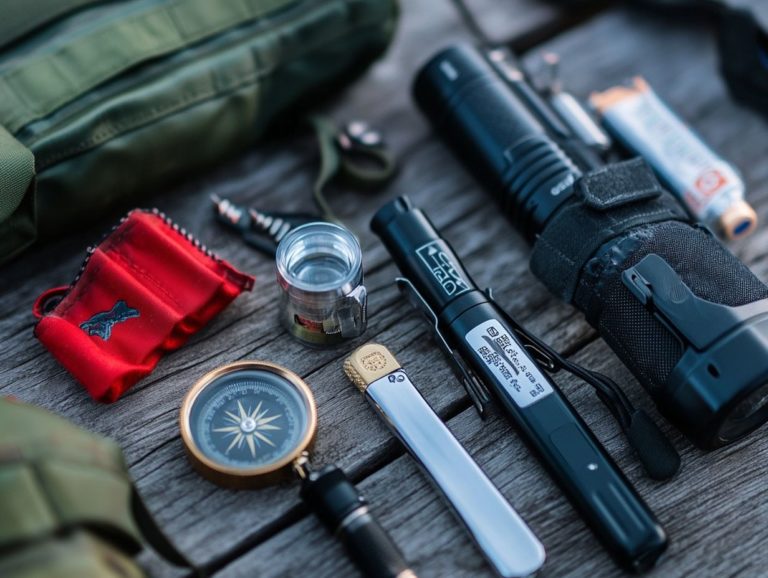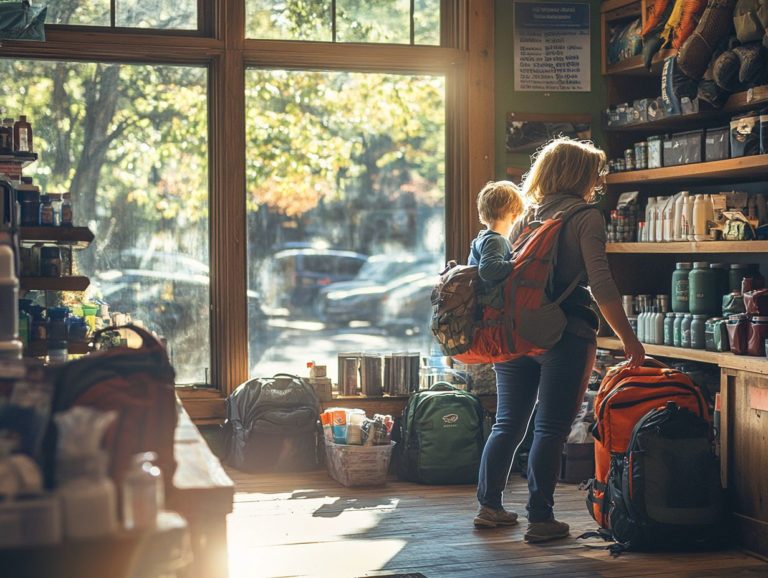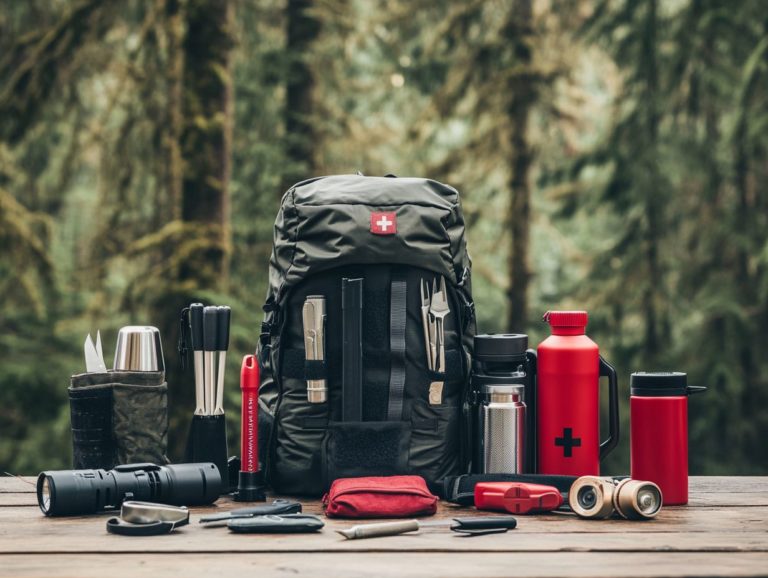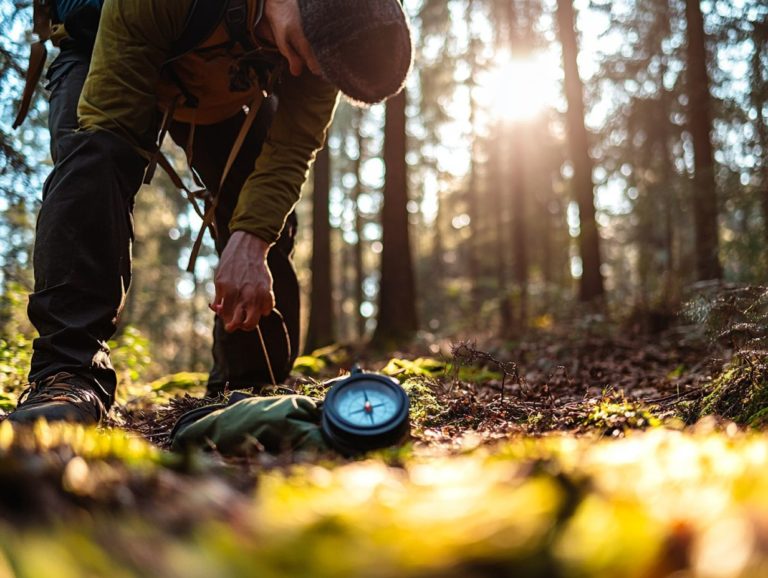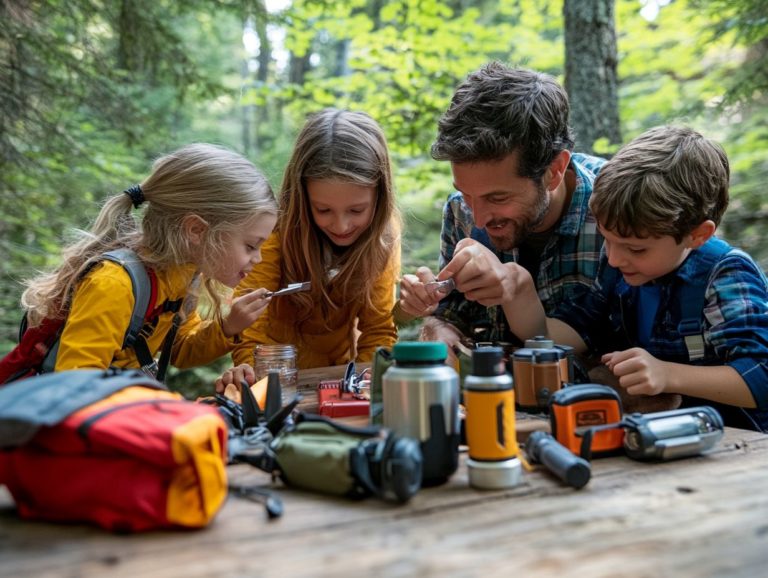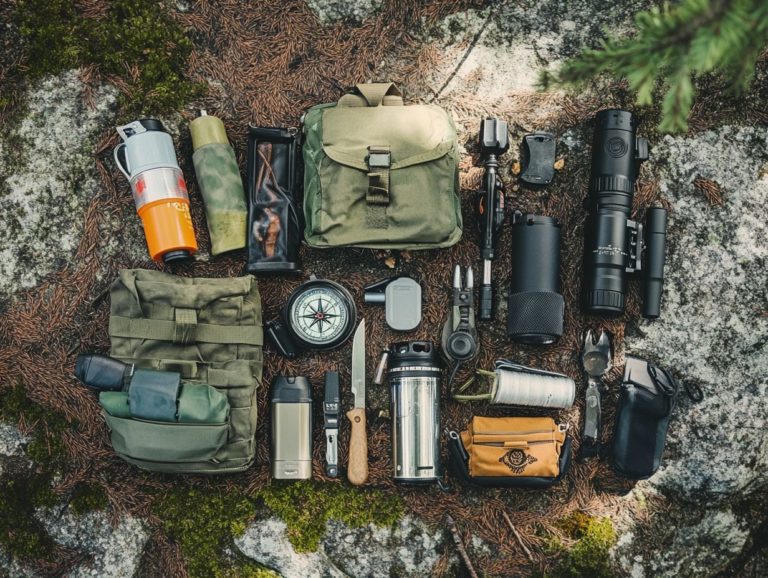DIY Survival Gear: What You Can Make Yourself
In an unpredictable world, preparation is key. One of the most effective ways to ensure you re ready is by crafting your own survival gear.
This guide reveals exciting benefits of making your own gear! You ll discover essential tools for various projects, innovative ideas for shelters, fire-starting techniques, and first aid essentials, all with practical tips for creating effective survival items tailored just for you.
Whether you re a seasoned pro or just beginning your journey, this guide will empower you to take control of your preparedness endeavors.
Contents
- Key Takeaways:
- Benefits of Making Your Own Gear
- Essential Tools for DIY Survival Gear
- DIY Survival Gear Ideas
- Tips for Creating Effective DIY Survival Gear
- Frequently Asked Questions
- What is DIY survival gear and why should I make it myself?
- What are some essential DIY survival gear items I should have?
- Are there any safety precautions I should take when making DIY survival gear?
- Can I make DIY survival gear even if I have little to no experience?
- What are the benefits of making DIY survival gear instead of buying it?
- Can I make DIY survival gear using only natural or recycled materials?
Key Takeaways:
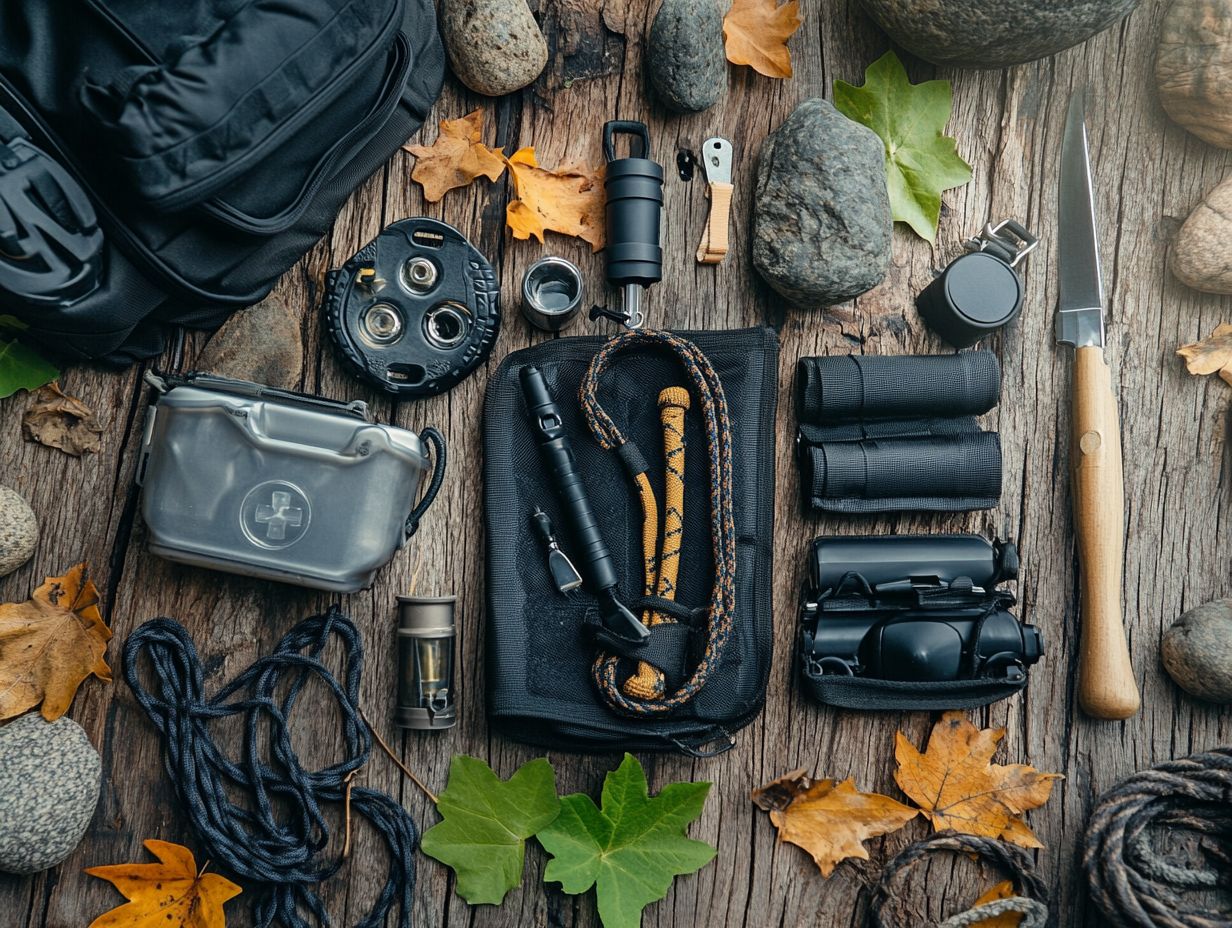
- DIY survival gear can save you money and allow for customization to fit your specific needs and preferences.
- The right tools are essential for successfully creating your own survival gear, including a knife, cordage, and multi-tool.
- From building shelter and starting fires to purifying water and gathering food, there are endless possibilities for DIY survival gear that can help you in an emergency situation.
What is DIY Survival Gear?
DIY survival gear encompasses the essential tools and equipment you can create or customize for your unique survival needs. This practice leverages various do-it-yourself methods to ensure you’re fully prepared for emergencies.
This covers a broad spectrum of items, from crafting survival tools and assembling a pocket survival kit to utilizing natural materials that bolster your self-sufficiency in wilderness settings. This way, you re well-equipped to tackle challenges related to hiking, camping, or unexpected crises.
Recognizing the importance of DIY survival gear is vital for anyone aiming to elevate their preparedness. Start by assessing your specific needs based on your environment and the potential emergencies you may encounter.
These may include natural disasters or extended outdoor adventures, while keeping in mind your basic survival tools.
By honing essential skills like water purification and fire starting, inspired by experts such as Bear Grylls and David Ever, you can cultivate a valuable sense of resourcefulness. This hands-on approach fosters self-sufficiency and instills confidence in your ability to navigate unforeseen challenges.
Crafting customized gear adds a personal touch that significantly enhances your overall emergency readiness.
Benefits of Making Your Own Gear
Creating your own survival gear offers significant savings and the freedom to customize equipment to align perfectly with your unique needs and preferences. Each piece can be specifically tailored for the survival situations you may face.
Making your own survival gear builds self-sufficiency and nurtures your resourcefulness. You ll find yourself adept at using basic survival tools, crafting essential items such as first aid kits and fishing kits.
Additionally, you will adapt seamlessly to various environments or emergencies that come your way.
Cost Savings and Customization
The primary advantage of crafting your own survival gear is the significant savings you can achieve. You ll often find that purchasing pre-made gear can hit your wallet hard.
Creating it from scratch with basic materials on hand is much more economical. You might discover that using natural materials like bamboo for tent poles or durable cords for securing your gear is a fraction of the price of branded items.
The customization aspect of DIY gear allows you to tailor your creations to meet specific needs or address unique survival scenarios. This personalized approach ensures that your gear is functional and suited for specific environments.
By handcrafting your items, you can prioritize the critical features that matter most to you, enhancing your preparedness for unexpected situations.
Essential Tools for DIY Survival Gear
To successfully craft your own DIY survival gear, it s essential for you to grasp the fundamental tools needed for these projects. These tools form the foundation for assembling a comprehensive survival kit that is specifically tailored to your unique needs.
- Knife
- Cordage
- Multi-tool
Get started today on your journey to creating effective and personalized survival gear!
Must-Have Tools for Making Gear
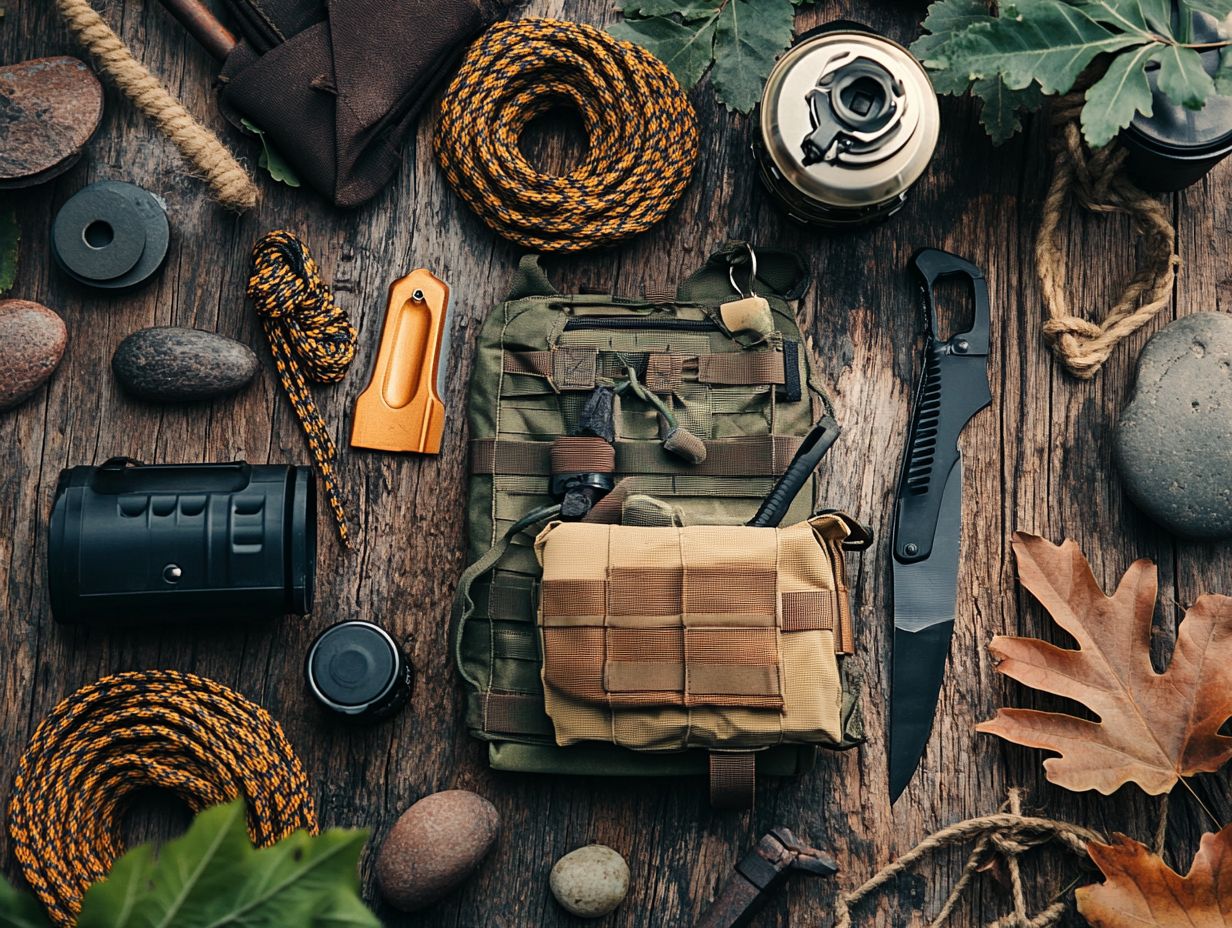
Ready to tackle the wilderness? Here s what you need to ensure your survival! When you embark on your DIY survival gear journey, several must-have tools every survivalist should consider are crucial for crafting reliable and functional gear.
High-quality knives are critical. A sturdy blade aids in food preparation and serves multiple purposes, like cutting rope or preparing kindling for a fire.
Multitools, like those from Victorinox or SOG, pack multiple features into one compact device. This makes them ideal for any survival situation.
Having a well-equipped sewing kit allows for quick repairs on clothing and gear, ensuring you can withstand even the harshest conditions. Mastering knot tying expands your skill set, providing effective solutions for securing items, building shelters, or fishing.
These tools enable you to tackle challenges in the wild with confidence, particularly when utilizing strong ropes and sharp objects.
DIY Survival Gear Ideas
Exploring a range of DIY survival gear ideas can inspire you to craft a diverse and comprehensive survival kit tailored to your unique needs. This approach not only equips you for emergencies but also enhances your ability to thrive in challenging situations with innovative and practical solutions.
Shelter and Shelter Building
Building a shelter is an essential survival skill. Employing DIY techniques to create a safe haven from natural materials fosters self-sufficiency and enriches your overall survival experience.
Understanding your surroundings is vital when constructing a shelter. Various terrains and climates demand tailored approaches. In wooded areas, fallen branches and leaves provide superb insulation. In arid regions, using rocks and earth to fashion a dugout offers substantial protection.
Evaluating the resources at your disposal is crucial. In tropical climates, materials like bamboo or palm fronds ensure your structure remains sturdy and adaptable. By focusing on effective design principles like selecting lower ground for warmth or elevated sites for better drainage you can significantly enhance the effectiveness and sustainability of your shelter.
Fire Starting and Cooking
Effective fire-starting techniques are essential for your survival. They provide warmth and light while enabling you to cook and purify water, making them a vital component of any DIY survival gear strategy.
In emergencies or wilderness exploration, knowing various methods to ignite a flame can mean the difference between comfort and despair. Fire serves as a central cooking tool, preparing nourishing meals and playing a crucial role in first aid by helping to sterilize equipment and providing warmth for those in shock.
Using a magnesium fire starter can be swift and reliable. Meanwhile, flint offers a classic approach that you can master with practice. Experimenting with natural materials like dry leaves or birch bark connects you with your surroundings and sharpens your fire-starting skills, reinforcing your ability to thrive in challenging environments.
Water Collection and Purification
Water collection and purification are essential skills for survival. Mastering various DIY techniques enables you to secure clean drinking water during emergencies, utilizing both innovative tools and natural methods.
The ability to effectively gather and purify water is invaluable in challenging situations. Techniques can range from crafting simple gravity-fed filters using sand, charcoal, and gravel to harnessing natural sources like rainwater or springs. Knowing how to properly boil water to eliminate pathogens can significantly enhance your safety.
A reliable water supply isn t just a convenience; it s a necessity that can make the difference in survival scenarios, especially during wilderness and camping trips. Start gathering these tools now and prepare yourself for any challenge that comes your way!
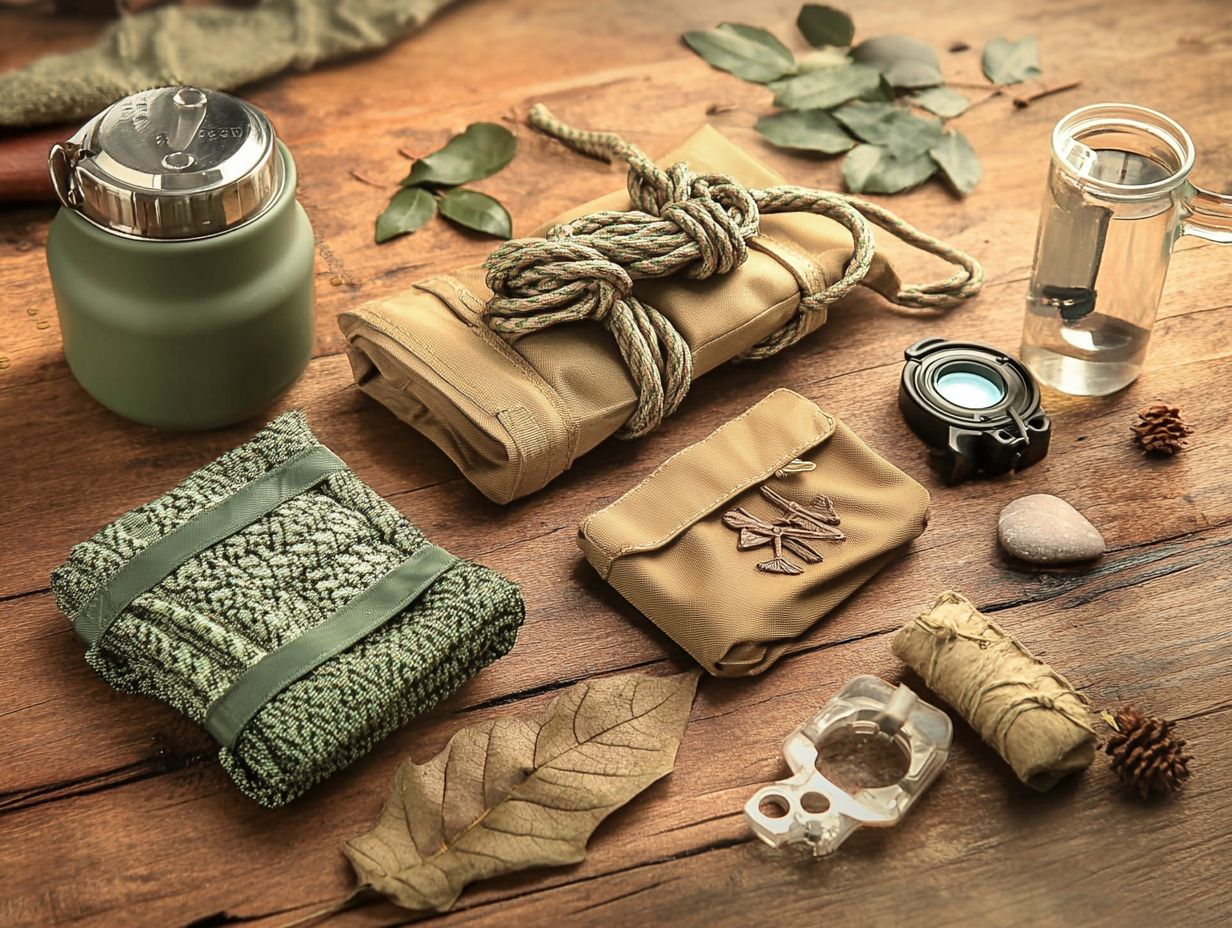
Effective navigation and signaling techniques are absolutely vital in emergencies, ensuring you can find your way to safety or alert others to your presence. These skills are essential when you’re crafting your own DIY survival gear.
Understanding how to use natural landmarks like mountains, rivers, and distinctive trees can dramatically enhance your ability to orient yourself in unfamiliar terrain. A compass, which is often included in survival kits, serves as a reliable tool for determining direction.
For signaling, equipping yourself with emergency whistles or reflective materials is crucial. These tools can significantly boost your visibility and audibility in challenging conditions.
By integrating these techniques with practical survival gear, you elevate your chances of making informed decisions, whether you’re navigating dense forests or signaling for help in an emergency. Start practicing these techniques today!
First Aid and Medical Supplies
Having a well-stocked first aid kit is a fundamental element of your DIY survival gear, offering essential medical supplies that can be crucial for addressing injuries or ailments you might encounter during outdoor adventures or emergencies. Including a sewing kit can further enhance your preparedness.
This kit shouldn t just feature the basics like adhesive bandages, antiseptic wipes, and gauze pads; it should also cater to your specific needs based on your health history and any anticipated scenarios, including basic survival tools.
As you embark on the journey of assembling your own first aid kit, think about adding specialized items such as allergy medication or burn relief ointments. Also, include an emergency blanket for warmth in unexpected situations.
Being self-sufficient in medical preparedness not only allows you to handle minor injuries effectively but also instills a sense of confidence during crises, knowing that help is just a reach away. Understanding how to use these supplies to their fullest potential transforms a simple collection of items into a comprehensive safety net. Mastering these skills enhances your overall self-sufficiency.
Food Gathering and Preservation
Food gathering and preservation techniques are essential skills for anyone venturing into the world of DIY survival gear, enabling you to sustain yourself in the wild through a variety of resourceful methods, including fishing kits.
These skills cover an impressive array of strategies, from casting nets and baiting hooks for fishing to identifying edible plants and fungi while foraging. Understanding preservation methods like removing moisture from food, fermentation, and smoking is crucial for extending the shelf life of the food you gather, ensuring your water and food supply remains sustainable.
Mastering these techniques not only enhances your ability to thrive in unfamiliar environments but also deepens your appreciation for nature’s abundant offerings. Incorporating water purification methods is essential for safe consumption.
In survival situations, your capacity to efficiently gather and preserve food can significantly impact your experience, transforming potential hardship into comfort and bolstering your resilience and autonomy. Utilizing tools like a survival spear can enhance your hunting efficiency.
Tips for Creating Effective DIY Survival Gear
Creating effective DIY survival gear demands meticulous planning and execution. By following key tips and best practices along with DIY techniques, you can ensure that the items you craft will perform reliably when faced with high-pressure survival situations.
Get ready to craft! It’s your chance to be prepared and confident!
Key Considerations and Best Practices
When you re crafting DIY survival gear, several key considerations can significantly elevate the functionality and reliability of your equipment. These include the use of resilient cords and sharp objects for crafting.
Among these factors, material durability stands out. Choosing sturdy, weather-resistant components can make the difference between gear that endures challenging conditions and gear that falters at critical moments.
The ability to adapt your gear to various situations is equally important. Versatility in design allows you to utilize the same equipment across multiple scenarios, maximizing its value, especially when you know how to tie different types of knots.
Before you venture into the wild, taking the time to test your gear is essential. This ensures that it operates correctly and meets your specific needs. Emphasizing resourcefulness and self-sufficiency will enable you to navigate obstacles with confidence. Thoughtful preparation fosters peace of mind in any survival context, especially when relying on water and fire essentials.
For more tips, check out resources by Bear Grylls and David Evers on YouTube for invaluable insights on DIY survival.
Frequently Asked Questions
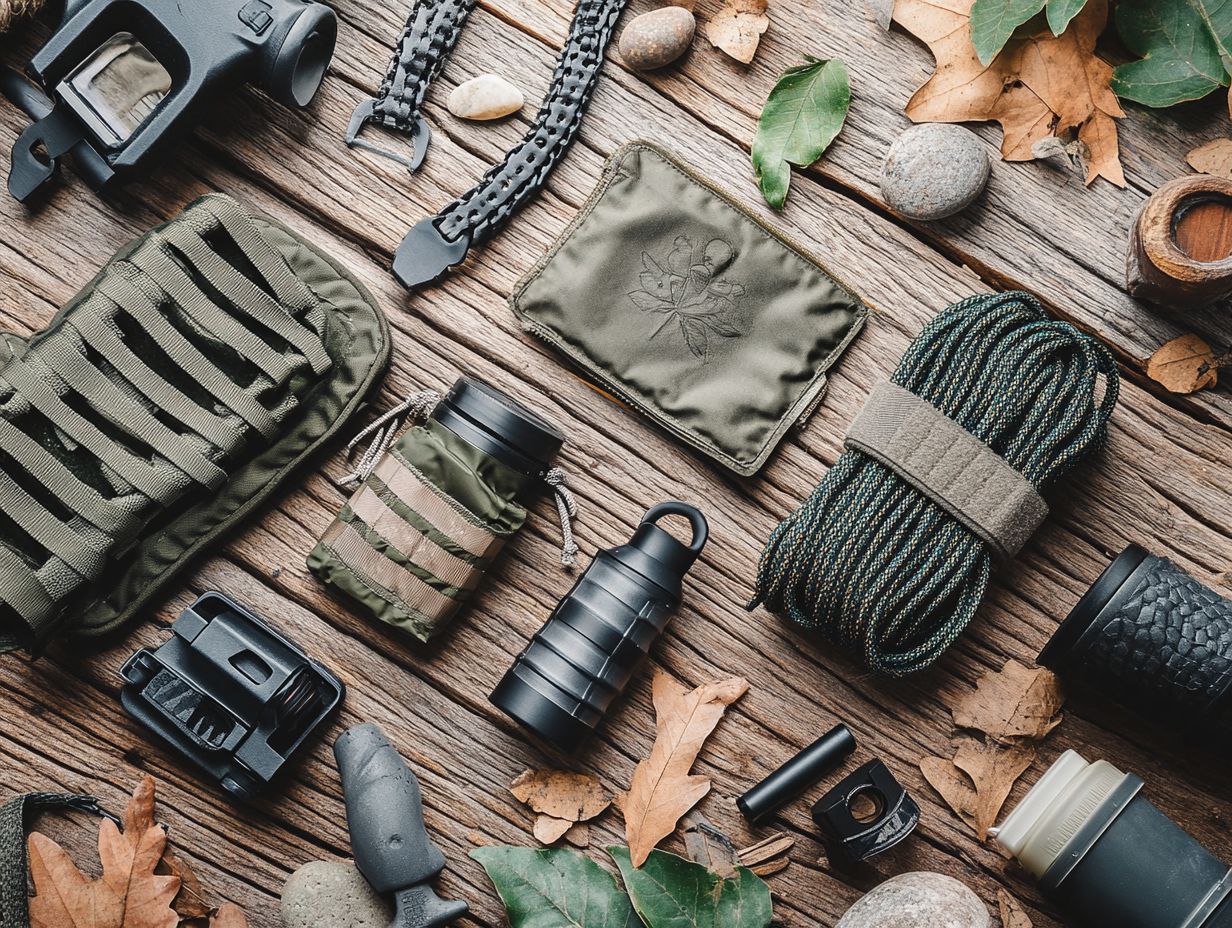
What is DIY survival gear and why should I make it myself?
DIY survival gear refers to items and tools made by hand using readily available materials. It allows you to create personalized gear that meets your specific needs and may be more cost-effective than purchasing pre-made gear.
Utilizing natural materials can further enhance your gear’s sustainability.
What are some essential DIY survival gear items I should have?
Some essential DIY survival gear items include a fire starter, shelter, water purification tools, first aid kit, and navigation tools. These items can be made using materials such as natural tinder, tarp, plastic bottles, and a compass.
Using paracord adds versatility to your gear.
Are there any safety precautions I should take when making DIY survival gear?
Yes, it s crucial to always prioritize safety when making DIY survival gear. This includes wearing protective gear and using sharp objects carefully.
Follow instructions closely and test the gear before relying on it in a real survival situation. Make sure you have fire starting supplies handy.
Can I make DIY survival gear even if I have little to no experience?
Absolutely! There are plenty of simple DIY survival gear projects that require no prior experience or special skills. Many tutorials and guides are available online to help you learn how to make various gear items, including a pocket survival kit.
What are the benefits of making DIY survival gear instead of buying it?
The main benefit of making DIY survival gear is that it allows you to customize the gear to your specific needs. You gain a sense of self-reliance and satisfaction knowing you can create your own survival tools.
Learning how to craft survival tools leads to innovative solutions in challenging situations.
Can I make DIY survival gear using only natural or recycled materials?
Yes, many DIY survival gear projects utilize natural materials or recycled resources. This approach reduces waste and promotes sustainability while allowing you to make gear using items that may be readily available in a survival situation.
This enhances your overall resourcefulness.
Don t wait start your own DIY projects today!

